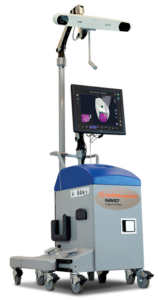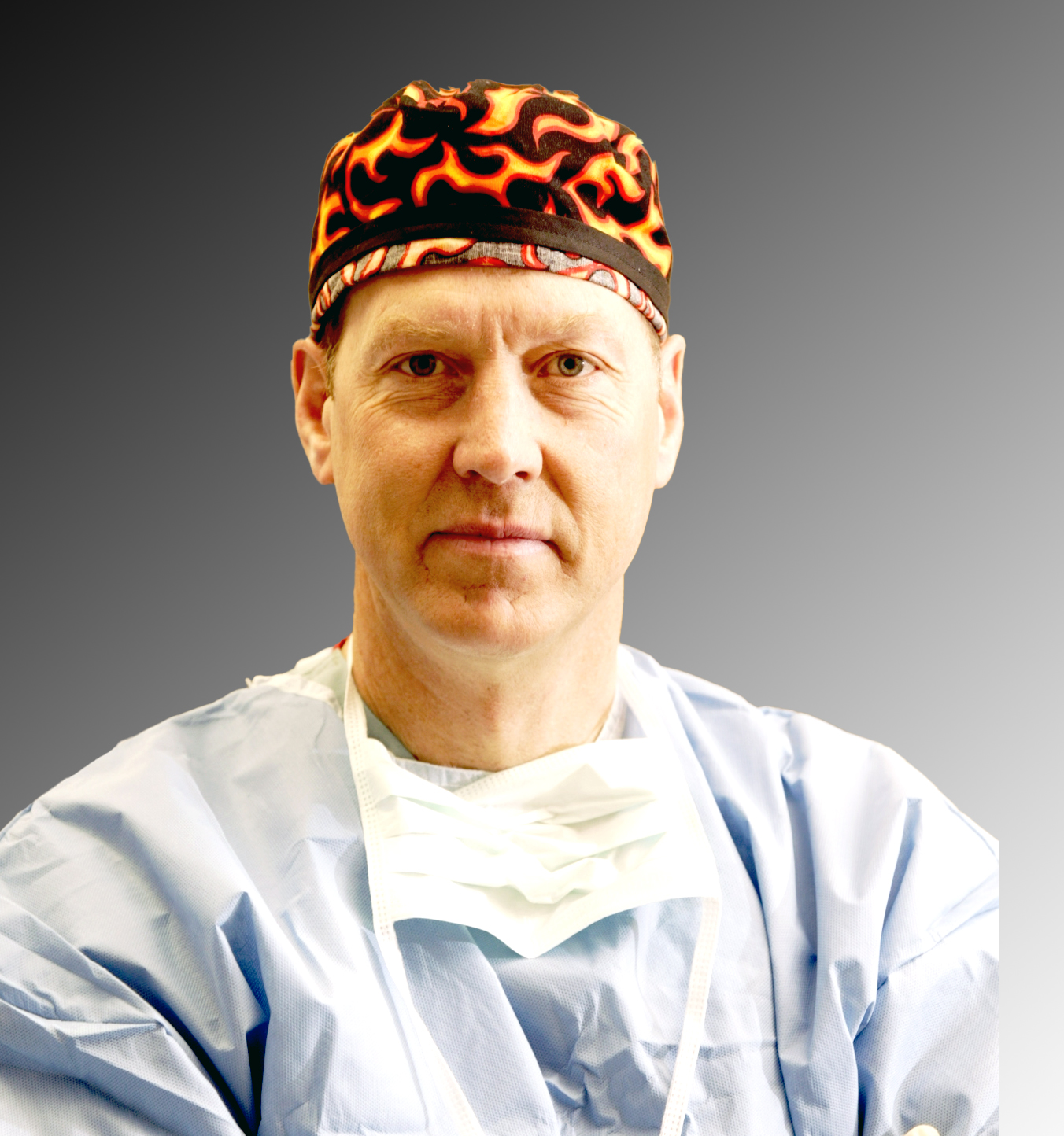CORI Robotics Assisted Knee Replacement
Knee and Hip Replacement with CORI
Is Living With Joint Pain Really Living?
If you’re one of the estimated 30 million Americans suffering from osteoarthritis, discover how knee replacement using CORI robotic assistance may help you return to the activities you love.Find out today how St George Surgical Center can help you return to an active lifestyle.
St George Surgical Center, a physician-owned, accredited outpatient surgery center, has invested in cutting-edge technology to improve overall patient health: the CORI◊ robotics-assisted surgery is an advancement in orthopedics, putting accuracy in your surgeon’s hands that could result in a longer-lasting knee.
Contact our care coordinator today at (844) 673 0095 toll-free, and we’ll answer your questions and put you in touch with our Board-certified, fellowship-trained orthopedic surgeons.

FAQS
Frequently asked questions about surgical procedures
Can I use my insurance and get these prices?
Payment is due 14 calendar days prior to your surgery date. If, after the cutoff, your account is not settled, your case must be postponed.
How quickly can I have surgery?
How will I meet my surgeon?
If I had a car or work accident, would you work with my employer or attorney for payment?
What if I get sick right before my surgery?
You could develop a respiratory infection, a urinary tract infection, COVID, or some other condition that may necessitate postponement. There is no penalty when this happens.
What’s Included:
- Facility fee
- Graft and hardware costs (if needed)
- Surgeon and assistant surgeon fees
- Anesthesiologist
- Time in the recovery unit (at no additional charge)
- Initial consultation visit
- One post-operative visit
*Please note: If you choose not to proceed with surgery after the initial consultation, or if you delay your procedure for more than 6 weeks, you will need to update your consultation at a cost of $375.
What’s not included:
- Lab testing before and after the surgery, as needed
- Electrocardiogram (EKG), depending on age. If you had one elsewhere in the past 6 months and it read “normal”, we can forego this expense.
- Imaging costs. X-rays and MRIs can be obtained anywhere.
- Physical therapy services
- Medications you’ll need (oral or IV antibiotic infusions if an infection arises)
- Wound care
- Bracing supplies
- Additional doctor visits (a pre-operative visit with the surgeon, in person, and any required post-op follow-ups after the suture removal to monitor your progress
- Additional surgical intervention if a complication arises
- Additional imaging or hospital care if a blood clot develops
How Do I Know If I Am A Candidate For Robotics-Assisted Knee or Hip Replacement Using The CORI System?
Although each patient must consult with a physician individually, typical knee or hip replacement candidates share the following characteristics:
- Joint pain during activities and sometimes during sleep, which awakens you with pain
- Joint pain that limits activities on more days than not
- Initial joint pain or stiffness caused by activities from a seated position
- No longer finding relief from non-surgical treatment options
Not everyone is a candidate for knee or hip replacement using the CORI Surgical System. Knee and hip replacement surgery is intended to relieve pain and improve joint function. However, implants may not produce the same feel or function as your original knee. There are potential risks with knee replacement surgery, such as loosening, fracture, dislocation, wear, and infection that may result in the need for additional surgery. Individual results will vary. Talk to your doctor to determine what treatment may be best for you.
Accurate Implant Placement
Our physicians use the CORI system to perform robotics-assisted partial knee replacement. They chose this technology because it allows them to individualize each patient’s knee replacement surgery and use robotic assistance for accurate results.1
With the CORI system, there is no special pre-operative preparation or post-operative recovery protocol. The CORI system does not perform the procedure; rather, it assists the surgeon by providing accuracy, crucial to the success of the surgery.
1. Lonner, Jess, Moretti, Vince, “The Evolution of Image-Free Robotic Assistance in Unicompartmental Knee Arthroplasty.” The American Journal of Orthopedics, May/June 2016, 249-254. Accessed June 7, 2016
Partial Knee Replacement, Compared To Total Knee Replacement, Offers:1-9
- Improved patient satisfaction
– 19% of total knee patients do not have their expectations met
– 94% of partial knee replacement patients have their expectations met - Lower Post Operative Pain.
- Lower Risk of Complications
- Improved Range of Motion
- Partial knee replacement has been shown to result in a greater range of motion over total knee replacement
- Knee Feels More Normal
- Shorter Hospital Stay
- Faster Recovery Time
- Smaller Incisions; Smaller Scars
- More Options in the Future.
- Partial knee replacement offer more options in the future, where osteoarthritis can advance and further treatment, such as a total knee replacement may be needed
- Smaller Implants
- Most Insurance Plans Cover Partial Knee Replacement. Please call your insurance provider to verify coverage.
- Less Removal of Bone and Cartilage
- No Removal of Good Ligaments
- Collier, Matthew, et al., “Patient, Implant, and Alignment Factors Associated With
- Revision of Medial Compartment Unicondylar Arthroplasty.”, Jour of Arthro, Vol 21 No 6, Suppl. 2, 2006.
Hernigou, Ph, Deschamps, G., “Alignment Influences Wear in the Knee After Medial Unicompartmental Arthroplasty.”, Clin Orthop Relat Res., Volume 423, June 2004, pp 161-165 - Scott CE, Howie CR, MacDonald D, Biant LC, “Predicting Dissatisfaction Following Total Knee Replacement” J Bone Joint Surg Br. 2010 Sep;92(9):
- Berger RA, Meneghini RM, Jacobs JJ, et al. Results of unicompartmental knee arthroplasty at a minimum of ten years of follow-up. J Bone Joint Surg Am. 2005;87(5):999-1006
- Brown, NM, et al., “Total Knee Arthroplasty has Higher Postoperative Morbidity than Unicompartmental Knee Arthroplasty: A Multicenter Analysis,” The Journal of Arthroplasty, 2012
- Hall et al., “Unicompartmental Knee Arthroplasty (Alias Uni-Knee): An Overview With Nursing Implications,” Orthopaedic Nursing, 2004; 23(3): 163-171
- Laurencin CT, Zelicof SB, Scott RD, Ewald FC. Unicompartmental versus total knee arthroplasty in the same patient. A comparative study. Clin Orthop Relat Res. 1991 Dec;(273):151–156
- Repicci, JA, et al., “Minimally invasive surgical technique for unicondylar knee arthroplasty,” J South Orthopedic Association, 1999 Spring; 8(1): 20-7.
- Arthritis of The Knee, American Academy of Orthopedic Surgeons, //orthoinfo.aaos.org/topic.cfm?topic=a00212, Accessed 9.5.16
Denver or Dallas with only one stop on American, United, Delta, and many low-cost airlines.
FEATURED SURGEONS
CHOOSING THE RIGHT ORTHOPEDIC SURGEON
Total and partial knee or hip replacement surgery with the CORI Robotic-assisted Surgical System is a technically demanding surgery. Surgeons face a steep learning curve for this procedure, so choosing a surgeon who is skilled and certified to use the CORI Robotic-assisted Surgical System is an important consideration.
Dr. Gregory J. Hicken, MD, FAAOS, clinical director of the Robotic Orthopaedic Institute in St George, Utah, has surgical privileges at St. George Surgical Center.
If your medical condition prevents you from having your knee or hip replacement surgery with Dr Hicken at St George Surgical Center, we’ll send the robot with him to perform your surgery at a nearby hospital where he has surgery privileges. Call for details. 435-673-0095.
INVITE Dr Hicken to come and speak to your group
about robotic-assisted knee and hip replacement or sports medicine injuries and treatments. Call 435-523-3378 to learn more.

What robotic-assisted full/partial knee replacement patients are saying
“When I compare my CORI knee replacement surgery to my previous conventional surgery two years ago, I see a huge difference. I could not walk or even bend my knee one month and a half after the previous surgery. This time, I was able to walk two days after. I am using a cane for added support now, but I can also walk without it — and today I drive myself wherever I like. I have my independence back!”
The CORI Surgical System is Not For Everyone
Children, pregnant women, patients who have mental or neuromuscular disorders that do not allow control of the knee joint, and morbidly obese patients should not undergo a robotic-assisted joint replacement procedure.
Knee and hip replacement surgery is intended to relieve pain and improve function.
However, implants may not produce the same feel or function as your original joint.
There are potential risks with joint replacement surgery, such as loosening, fracture, dislocation, wear, and infection. These events, though rare, may result in the need for additional surgery.
Longevity of implants depends on many factors, such as the types of activities and weight. This information is provided for informational and educational purposes only, and is not intended to be, nor should it be construed as, medical advice.
Consult your physician for details to determine if a Robotic-Assisted procedure is right for you. Our surgical systems are intended to assist the surgeon in providing software-defined spatial boundaries for orientation and reference information to anatomical structures during an orthopedic procedure.
Our robotic-assisted surgical system is indicated for use in surgical knee and hip procedures, in which the use of stereotactic surgery may be appropriate, and where reference to rigid anatomical bony structures can be determined.
These procedures include unicondylar knee replacement (UKR), patellofemoral arthroplasty (PFA), and total knee arthroplasty (TKA) as well as total hip arthroplasty (THA).
The CORI surgical system is indicated for use with cemented implants only.
The robotic system works in conjunction with the surgeon’s hands to achieve the precise positioning of the knee implant.
Using the CORI robotic-assisted hand piece enables your robotic-certified, board certified and fellowship trained surgeon to plan the surgery accurately intraoperatively, position the implants, and reduce the risk of errors during the procedure, while decreasing the length of time it takes for you to recover and return to your formerly active lifestyle enjoying friends, family, recreation, shopping, and other active leisure activities.
SGSC can accept your Medicare coverage and supplemental insurance for payment for a full/partial robotic knee or hip replacement.
But SGSC also offers outstanding surgical value, with totally transparent, all-inclusive, package pricing of $15,990 for your total knee replacement or $17,985 for your total hip replacement if you are uninsured or are a participant in an employer-sponsored health plan that contracts with SGSC directly.
And, unlike most other robotic systems that are employed around the country, a prior CT scan not required in most cases. That’s because instead of using a CT as a planning tool before surgery, the robotic-assisted technology in both the CORI perform the entire surgery as a “dry run” in minutes before placing your new replacement implant. This avoids additional radiation equal to about 10 cross-country air flights and saves you between $300 and $1200 in pre-operative testing.
Our special-value robotic hip and knee package prices include:
- A 30-year expected* service life hip or knee replacement implant
- the facility and surgeon fees
- your anesthesia fees
- your take home medication if you are visiting from out of town,
and overnight overnight stay if necessary.
No surprises, just great surgical value! Ask also about our low- or no-opioid pain management options.
WILL MY EMPLOYER OR INSURANCE COMPANY PAY FOR MY ROBOTIC KNEE OR HIP REPLACEMENT SURGERY AT ST GEORGE SURGICAL CENTER?
Many of our contracted employers waive plan deductibles and copays and pay for travel (air and hotel) for the patient and one companion.
FINANCING YOUR ROBOTIC KNEE OR HIP REPLACEMENT
If you need financing, we offer several medical financing options for your surgery package. A $30,000 average household income and at least a 520 FICO score are usually sufficient for approval. Interest rates for this medical expense limited MasterCard are lower than most other programs.
Can I Travel to St George for Surgery?
Yes, and we’ll help you make all your arrangements.
- We have arrangements to try to obtain free flights through a non-profit volunteer pilot organization. We can do this with 10 days’ advance notice in most cases.
- We have discount codes for the Holiday Inn in town. This hotel is 1.5 miles from the surgery center and 2 miles from our clinic.
- We’ll arrange to send your after-surgery medications to your hometown pharmacy for pickup before you leave.
What if I would rather drive to St George?
No problem, we can help with those plans as well. When you have surgery with us, we’ll need to make sure you’re safe and comfortable after surgery. We’ll arrange cold compression therapy that requires an AC/DC adaptor/transformer and frequent stops to stretch and refill the ice reservoir on the road.
We’ll ask about the vehicle you’ll travel in to ensure you have a way to elevate and stretch out in the vehicle on the road while someone else does the driving.

How are follow-up and initial consultations handled?
In-person and telehealth consultations are possible with the surgeon to whom your case is assigned. The initial visit is included in the surgical package and is valued at $375.
We can also obtain the flights from the volunteer pilot nonprofit if you’d like to come for initial and follow-up visits in person. One follow-up visit is included in the surgical package at a value of $175. Any additional visits are charged at the time of service to your credit or debit card.
Transparent Pricing Guide
Find out the exact cost of your procedure in seconds, with no hidden fees, no surprises, and complete transparency every step of the way.
